Opinion
Blame humans for crashes, not autonomous cars | Giga Gears
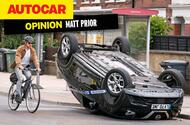 Matt Prior takes aim at people peddling false narratives about autonomy because it furthers their own causes
Matt Prior takes aim at people peddling false narratives about autonomy because it furthers their own causes
Who is to blame for crashes? A study by the US’s National Highway Traffic Safety Administration suggested the “critical reason” was “the driver”. In 94% of cases this is true, according to the results.
This statistic has been misused by various advocates and enthusiasts of driver assistance, autonomous vehicles and LinkedIn over the years to the point that the NHTSA today goes to great lengths to qualify its findings.
The survey was big: it sampled 5470 crashes between 2005 and 2007. In its results, the NHTSA defined the ‘critical reason’ as ‘the last event in the crash causal chain’.
Ergo driver actions weren’t necessarily the root cause but were the last significant event before impact.
Yet nearly two decades on, people will tell you that if you automate driving or remove ‘human error’, you will prevent more than nine in 10 crashes.
This “would be great, but it’s simply wrong”, said Antonio Avenoso, the European Transport Safety Council’s executive director, back in 2019.
He blamed the continuing recurrence of the claim on a “fundamental misunderstanding” – perhaps rather kindly, because that implies the misunderstanding was accidental, and I suspect most know they’re using the statistic incorrectly but continue to because it furthers their cause.
The truth is that humans are actually the root cause of 100% of all crashes. Even if a wheel falls off of a car, recorded now as mechanical failure, it’s not the wheel’s fault, but either its design or its maintenance, all of which was done by people.
Look hard enough and you will find human error everywhere in life. In my garden as I write, a squirrel and a magpie are having a tense face-off over some spilled bird seeds.
The squirrel is standing firm, but as with all greys, he’s only here because Victorians imported his ancestors – a human error.
He’s only going after bird seeds on the ground because the feeder was poorly designed or I overfilled it – either way, human error.
And the magpie is only in my garden because we’ve reduced his habitat elsewhere. Without humans cocking up, this seemingly naturalistic scrap wouldn’t be happening at all.
If one can attribute human errors to scenes like this, where do advocates of the 94% statistic think blame for crashes no longer caused by drivers should go?
A BBC headline from last month read “NHS computer issues linked to patient harm”, but it isn’t the computers that are the root problem, it’s the people who designed it and used it.
You can’t blame computer systems for the Post Office Horizon IT scandal: it was the people behind it, many of whom we’ve still never heard apologise.
And what worries me is that as automation increases, accountability decreases. If I drive into you, the law can find me easily responsible, you can look me in the eye, I can look back at you and I can say “I’m sorry”.
If my car crashes into you, even if automation makes that event much, much less likely, it will still ultimately be somebody’s fault, but who knows whose? Who apologises? Who holds the system accountable?
We’re talking about potential injury, life-changing physical and mental harm, death and grief. At the moment, too much of it.
Automation should (and, thanks to stability control, ABS, airbags and more, already does) reduce the amount, but given personal accountability inevitably reduces alongside it, finding an ‘acceptable’ level of automated collisions – and casualties – is very difficult.
At the moment, people are at the wheel and people are ultimately responsible. If we’re not, even the wrongly advocated 94% reduction in collisions wouldn’t be enough.
We tolerate people making mistakes because we’re human. We have the capacity for remorse and forgiveness. Without those, the bar is zero harm.
Legal flip-flopping hindering car makers’ decisions | Giga Gears
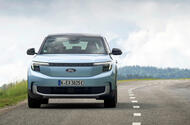 A shock policy announcement can uproot a car firm's entire 15-year plan, as Ford's EV boss tells us
A shock policy announcement can uproot a car firm's entire 15-year plan, as Ford's EV boss tells us
The impact - and often then despair - surprise regulatory announcements have on those running car companies was laid bare earlier this month by Ford Model E COO Marin Gjaja.
While he was in the air from Dearborn to Slovenia for the launch of the new Ford Explorer, the European Commission had announced plans to impose tariffs on Chinese electric cars and less than 48 hours later the Labour party in the UK, widely expected to win the 4 July election, had announced it would bring back a ban of the sale of non-electric cars by 2030.
"We make 15-year capital bets and we're sitting here with profound changes made in the last 48 hours,” Gjaja told me. “Now you have to look at all your business cases, all the investments you're making, and adjust what your expectations are.
"It becomes very difficult, and I think that level of uncertainty is the fundamental challenge all players have in the market now."
While on the Explorer launch, Gjaja said he was in touch with Ford's government relations team to try and find out more about Labour's announcement and Ford would plan accordingly. Ultimately, it was warmly received by Ford's UK boss Lisa Brankin.
Constantly changing regulations, he said, lead to "inherent risk, and the risk of our business has gone up" as legislators flip-flop around the transition to electric cars.
Gjaja holds up Norway as a good example of how to manage the transition to electric cars by not incentivising the new technology but rather penalising the existing one.
Incentives cause "huge swings in consumer appetite depending on the level of the subsidy, which can be eliminated fairly abruptly". They cause the market to "bounce up and down".
Rather than constantly run scenarios and plans based on the latest legislative flip-flopping, car makers should be left to focus on "creating products that get people excited about what EVs can do" to ensure that behavioural change can happen towards EVs.
"The key thing we need is to get customers into the vehicle and drive to experience them. Once we have them in and they own it, they won't go back."
He senses further legislative disruption might be ahead with the onset of range-extender (REx) powertrains. which use a generator to support the battery that drives the wheels - something that's quickly gaining traction in China, the world's largest car market. However, as they produce CO2 emissions they would be banned in the UK and Europe in the 2030s, as things stand.
"I've got data from China that says 80% of the miles driven [in RExs] are electric and if you look at where the other 20% are being driven then they're quite efficient because of the size of the engine.
"How are legislators going to approach a vehicle that cuts 90% of the emissions, even though as it has an ICE component it is not zero emissions?
“If I were a regulator, I’d be doing cartwheels in the streets if I could get 90% of the emissions out [of an internal combustion engine] that doesn’t compromise by taking care of charging and range anxiety. You can charge whenever you want rather than what you need to.
“This is blowing up in China and we have people in China saying it will be 40% of the market. Right now, none of the regulatory regimes allow for that as where the EU has landed [with EVs] has spread globally."
However, Gjaja said that Ford, like other western OEMs, has not yet made major investments in the technology due to future legislation having already effectively banned it.
This shows how dangerous it is to prescribe the technology rather than the goal: legislators have forced car makers down the route of battery electric vehicles and development in other technologies, bridging or otherwise, get ignored. Development and progress is stunted.
Tesla Model Y: Trendy MPV, Not SUV | Giga Gears
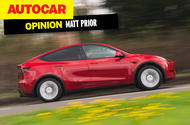
An 'SUV' today is the acceptable face of the Citroën Xsara PicassoSUVs accounted for nearly half of all car sales globally last year – or did they?
Is the Tesla Model Y an SUV? If you were, say, an activist against urban-dwelling 4x4s, would you be inclined to put a narky sticker on the windscreen of one or pop a lentil into one of its tyre valves so that it would get a flat?
I ask because the popularity of SUVs has hit new heights. Automotive data firm Jato Dynamics has announced that global sales of them rose 16% last year to 36.72 million, or 47% of all new cars sold. In many developed markets, SUVs are now the dominant models. And the Model Y is a big part of it. With sales up 64%, it’s the world’s favourite car, taking 1.22 million sales in 2023, easily outselling the second-placed Toyota RAV4 (1.08 million) and in the process making an EV the world’s top-selling car for the first time.
Tesla calls the Model Y an SUV, so does Jato, and it’s undoubtedly a tall car. But it’s indicative of the lines between traditional market segments blurring that it’s uncontroversial to refer to it as an SUV. Once, we considered the term ‘SUV’ to be simply an Americanism for ‘4x4’. They were the same thing, both having a serious off-road focus. But ‘SUV’ has since diverted from ‘4x4’.
Notably, Land Rover refers to the Discovery as an SUV but the Defender as a 4x4. And ‘SUV’ clearly stretches much further towards road-focused vehicles than that, because the Model Y Performance’s ground clearance is just 157mm – only 19mm more than the Model 3 saloon’s.
The bigger difference between the two is their relative heights. The Model 3 is 1441mm tall and the Model Y is 1624mm tall, a 183mm difference.
The discrepancy isn’t what happens under the car, then, but what happens inside a cabin that’s more than 15cm taller. Rather than having rough-road ambitions, a modern SUV is often just a roomier car than a traditional saloon, estate or hatchback with a seating position that’s easier to slide into, better visibility, more head room, more luggage space and, if the seating is more upright, more leg room. All of these things are appealing to families.
This means that all an SUV is today is the customer-acceptable face of a Citroën Picasso or Ford Galaxy. It’s an MPV in everything but name and with less drab looks.

There are plenty of cars that tell people they’re SUVs, which have an entirely road focus and are no more lifted off the ground than a Volkswagen Sharan but have bonnets and cladding where an MPV would have slab sides and a huge glass area.
Where this matters is when it comes to what we blame SUVs for. The International Energy Agency has said that “the trend towards heavier and less efficient vehicles such as SUVs, which emit roughly 20% more emissions than an average medium-sized car, has largely nullified the improvements in energy consumption during recent decades”.
Now, the physics are what they are: SUVs have a bigger frontal area than hatchbacks, because their bodies are taller, and the inevitable effect of that on overall aerodynamic drag (CdA, the drag coefficient times the frontal area) means they use more fuel than a smaller car. And we hate them for it. But we never hated spacious cars when they were MPVs. People didn’t let down the tyres on a Galaxy or Sharan for not being a Mondeo or Passat. And yet in large parts, the efficiency drawbacks were the same, just as the undoubted space benefits to the consumer were the same.
Personally, I prefer smaller, lighter, more efficient cars. But it’s no wonder that cars shaped more practically now account for almost half of all of those sold. I just wonder whether we need to call many of them something else.
BYD sponsors Euro 2024: Giga Gears
 Chinese firm looks to "future international expansion" at football tournament set to be watched by billions
Chinese firm looks to "future international expansion" at football tournament set to be watched by billions
If you’ve watched any of Euro 2024, it will have been impossible to miss the presence of BYD. The Chinese manufacturer has taken a prominent sponsorship of this major football tournament, its adverts and branding covering the 10 stadiums being used in Germany.
The cumulative audience of the Euros is in excess of five billion, according to tournament organiser UEFA, and BYD’s branding is given billing alongside the likes of Adidas and Coca-Cola and fellow Chinese companies Alipay and Hisense.
“They focus on future international expansion, using their foundation and capital strengths in China to boost overseas market presence and revenues, particularly in Europe,” Howard Yu, professor at the International Institute for Management Development, told the South China Morning Post about the surge of interest and investment from China in the Euros.
“What’s new and interesting here is that Chinese companies for the first time will need to engage the Western market and learn to localise, [changing] their image from being Chinese companies with an international presence to becoming companies that consumers will associate with strong local relevance.”
The sponsorship comes at a time when BYD must be feeling rather unwelcome in Europe, with its electric cars weeks away from facing 17.4% tariffs as the EU looks to level the playing field for Chinese imports that take advantage of huge state backing.
At a pre-tournament briefing, BYD’s European top brass were tight-lipped on tariffs, and they were not mentioned or even hinted at in a press conference where questions weren't invited.
However, the presentation took a notably different tone in the positioning of BYD. The company looked to position itself as much as a technology and a 'new energy' company as a car maker, car-making being just one of three pillars to its business, alongside solar energy and energy storage (batteries).
It also reminded us that it will have a new car factory in Hungary operational by the end of next year.
Most remarkable was the statistic that BYD now employs 100,000 engineers and files 32 patents every single day on average. It’s close to having 50,000 patents in total.
Just a few days earlier, a top global executive from a western car maker had told me the same thing about BYD and its number of engineers: even if you took away all the labour cost and supply-chain advantages, in addition to the Chinese state support, it still had 10 times the engineering capacity of his company – an amazing fact.
In engineering and manufacturing terms, BYD’s advantage seems absolute. The company now comes up in almost every industry conversation as a reference point (it has replaced Tesla to that end) and rivals are on red alert to the impact that it could have on their businesses.
For BYD, it’s a case of winning over consumers, which is where the likes of Euros sponsorship comes in helping to raise brand awareness.
UK marketing boss Mark Blundell told Autocar earlier this year that this is what the deal was all about and was well-timed at a time when the brand was building its sales volume and retail network.
The recognition seems to be working, with people reaching for their devices to find out more. Auto Trader reported that over the first weekend of the Euros, there was a 69% increase in people looking at used BYDs in its classifieds.
A search on social media for the wags’ response to this new brand being plastered in the stadiums homed in on BYD’s claim of being the ‘Number 1 NEV maker’.
That's rather jargony to the casual viewer (NEV isn’t an acronym widely used in Europe), and the most-liked comment wondered if the phrase referred to ex-England player Gary Neville’s mother… Perhaps a car name or two would be better served here.
Still, at least BYD has been noticed at a time when it has the industry on notice.
“Alpine: The Underdog Contender at Le Mans?”
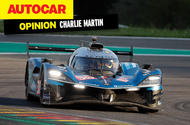 Alpine Racing’s chief expects little from the team this year – but I think he’s wrong
Alpine Racing’s chief expects little from the team this year – but I think he’s wrong
Every morning, weary-eyed engineer Bruno Famin wakes up and decides to walk a tightrope so long that he’ll still be on it long after dinner time.
Previously the mastermind of victories at Le Mans and Dakar, plus Sébastien Loeb’s record-setting run at Pikes Peak, Famin was last year named as the new vice-president of Alpine Racing.
It’s his job to correct the course of a Formula 1 team that took six rounds to score a single point in 2024, as well as a nascent World Endurance Championship (WEC) programme. All while avoiding the slippages of blunt honesty that appeared to land his predecessor, Laurent Rossi, a sudden and unexpected promotion to the Renault Group’s “special projects”.
I spent time with Alpine at the 6 Hours of Spa last month in a bid to better understand what it’s doing to escape from the slump.
Its brand-new hypercar, the A424, was due its third outing, and there were big questions about its competitiveness. Lucky fuel savings yielded a strong eighth-place finish in its Qatar debut, but the second round at Imola was much more testing. Contact through the first turn, as well as problems dealing with the circuit’s high kerbs, led to results of 13th and 16th place.
I met Famin in a team tent nestled between La Source and Eau Rouge, shortly before qualifying kicked off. There was an apparent tension in the air, Alpine having placed eighth out of 19 hypercars in the final practice session – almost a full second ahead of the BMW behind. Was Qatar a fluke, or was there real pace in the A424?
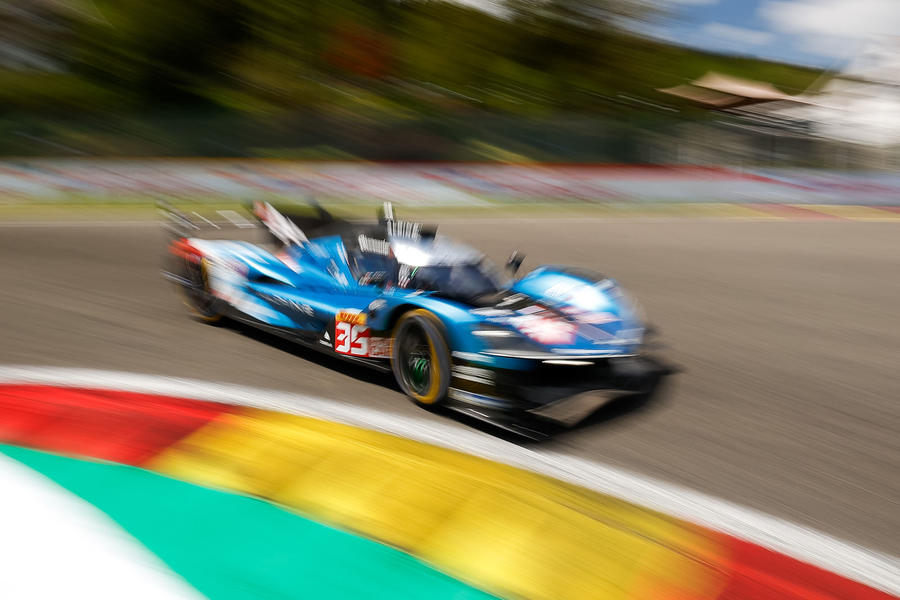
Famin proved tough to read: almost totally expressionless, save for a slight crease in his brow. It seemed he was quietly calculating something – that, or he was bored halfway to death by the Belgian journalists he'd just been interviewed by.
“The start of the season is quite in line with what we expected,” he said. “Not an easy one: maybe the anomaly is much more Qatar than Imola, because Qatar went smoothly. It was a 10-hour race. We brought both cars to the finish line without any problems and scored points.
“[We have] to be careful: Qatar was not the normal life, then back to reality in Imola.”
So, if not to win, what’s the point of Alpine’s racing programmes? Famin suggested the real spoils are in getting the brand in front of prospective buyers.
Although the Alpine A110 is a wondrous car, it has struggled to build much traction since its launch six years ago. Annual sales peaked at 4376 in 2019. If Alpine is to launch a much broader line-up of electric cars, in brand-new markets such as the US, it must improve on that figure.
“What we want to gain in WEC is the same thing that we want to gain in Formula 1: brand awareness,” said Famin. “Alpine is racing because we want to develop brand awareness globally. That’s why we’re doing Formula 1 in one hand, WEC and Le Mans on the other hand, because they are two programmes known globally. Everywhere in the world, everyone knows about the 24 Hours of Le Mans; everyone knows about Formula 1.”
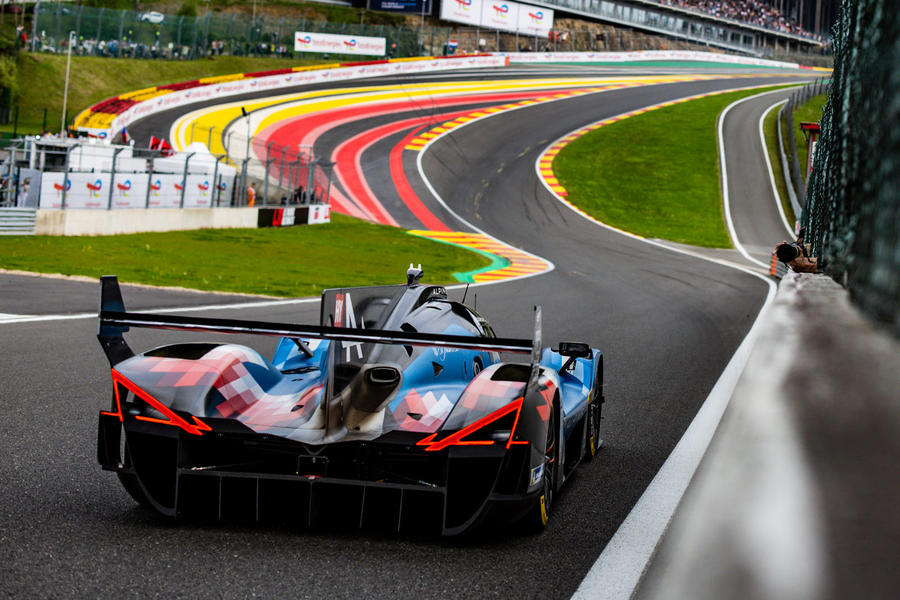
Which brings us neatly to the main event: given the clear importance of success at Le Mans, and Famin’s past glories, how confident was he feeling?
“The expectation of Le Mans is to win,” said Famin, before taking a long breath, “...but not this year.” Ah. It seems pessimism might still linger in the air at Alpine headquarters.
Famin elaborated: “It’s our first year and [Spa is] only our third race. Le Mans will be our [fourth]. We have a lot to learn, and we will take it in a humble way because the grid is super-strong.”
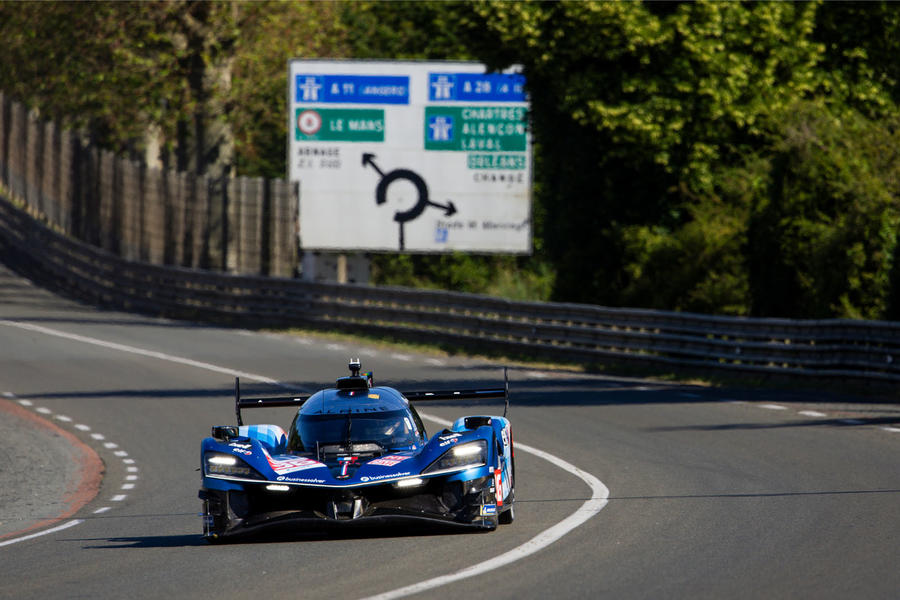
With that slightly sobering primer for the action, I stomped downhill to watch qualifying with low expectations. At which point, something unexpected happened: not only were the Alpines fairly quick, but they even edged a handful of Porsches, Ferraris and Toyotas. One even made it into the Hyperpole – think Q3 in Formula 1, if you’re unfamiliar – for the first time. It placed seventh, ahead of two Ferraris.
Come race day, it proved no fluke. The pace of the two Alpines was strong from the outset, if not quite on a par with the front-running Ferraris and Porsches. Several crashes compressed the six-hour marathon into a series of sprints, but the Alpines just about held onto their positions in the top half of the pack. After a properly harrowing crash and a two-hour extension to the race, the Alpine duo came home in ninth and 12th.
With that in mind, I wonder if Famin’s pessimism around Le Mans was perhaps misplaced. You could argue Alpine’s results at Qatar and Spa were buoyed by chaos, but is that not the nature of endurance racing? Even the tragically slow Peugeots looked in with a shot at Le Mans glory during last year’s rain – and showers are once again on the cards.
I’d also suggest that Alpine has an especially motivated pair of drivers in Ferdinand Habsburg and Mick Schumacher, each crewing the number 35 and 36 cars.
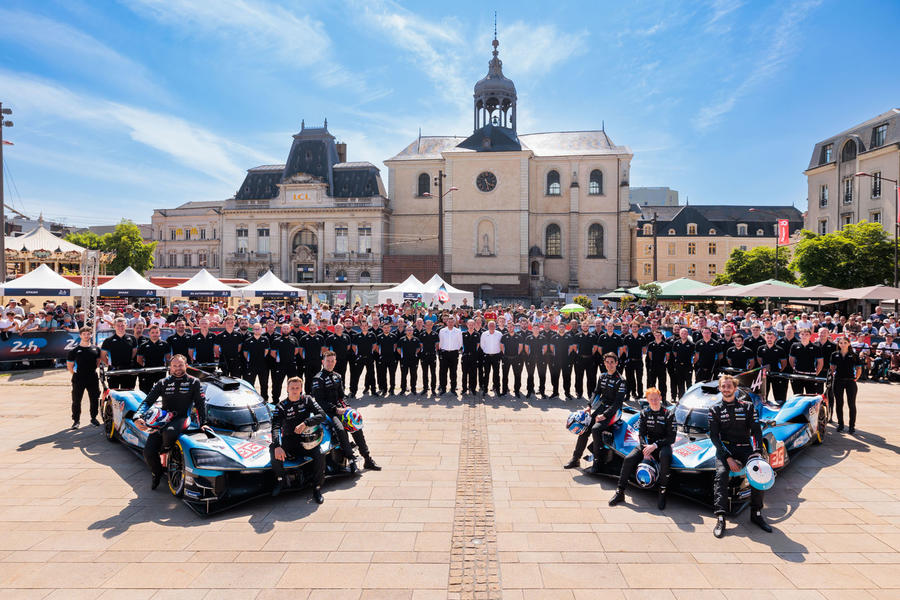
Habsburg – no, the name isn't coincidental: he really is a prince – suffered two fractured vertebrae in April, having crashed during a test at Spain’s Motorland Aragon. He missed Imola and Spa but now returns for the jewel in the crown of the WEC calendar. Habsburg is quoted by Sportscar365 as saying that he feels “really strong” ahead of his comeback, and the effort he's put into a return for Le Mans shows his desire for a successful run at the biggest race of the year. I wouldn't be surprised if that sheer wanting translates into strong pace.
Schumacher, meanwhile, is in with a shot at returning to F1 with Alpine. Esteban Ocon is vacating his seat at the end of this season, and Pierre Gasly is still in talks on a renewal, so there’s at least one open space.
Schumacher very clearly has his eyes (and heart) on it. He told me that he chose Alpine’s WEC programme over other teams because it’s the “closest to Formula 1”, pointing to Famin’s involvement in both series. But, given Schumacher’s previous F1 campaigns were hardly impressive, he almost certainly needs to do more to impress Alpine’s bigwigs.
What better place to impose your return to the top flight than Le Mans, with millions of eyes on the action? A good drive – even if it’s not a winning one – could bring the stock boost that Schumacher needs to make it back into single-seaters. Such pressure should help him to lock in mentally and prepare for one of the more taxing races he’ll have taken part in to date.
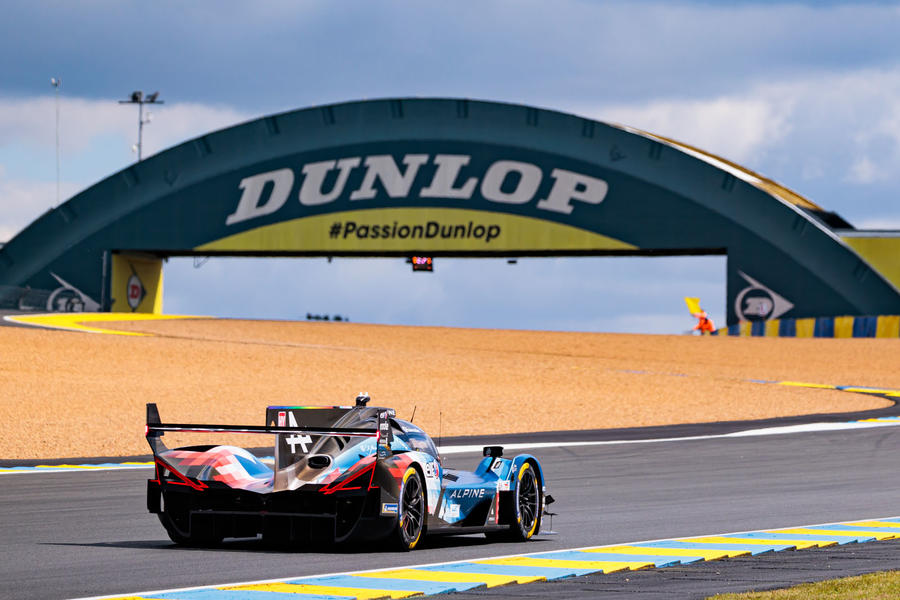
Now, none of this is to say I earnestly believe Alpine will take a comfortable win over the favourites, Porsche, Ferrari and Toyota. Balance of Performance regs all but guarantee it: the Alpines have the lowest power output of all the hypercars at Le Mans (680bhp), a real handicap on such a fast circuit. And there’s always going to be a reliability concern running a new car for so long without interruption.
Yet I wouldn’t completely count the squad out, like it seems Famin has.
